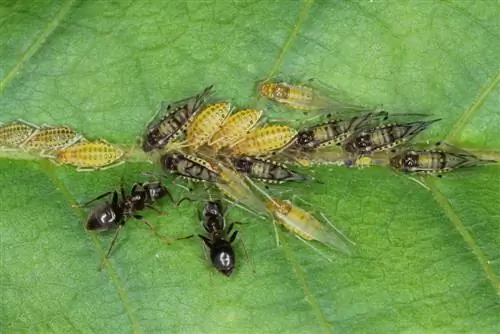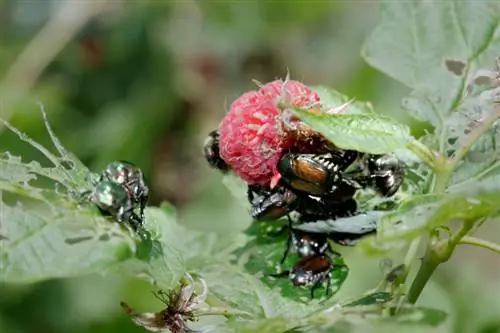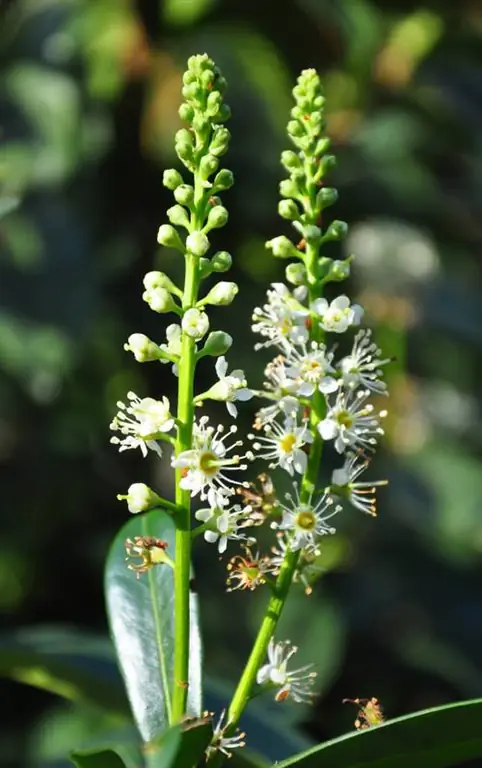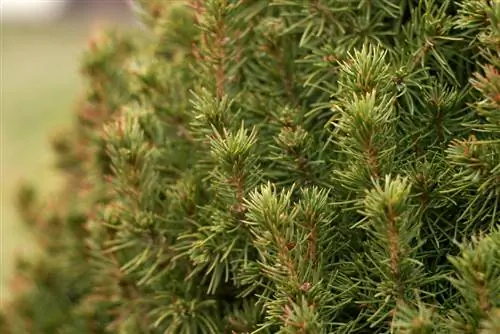- Author admin [email protected].
- Public 2023-12-16 16:46.
- Last modified 2025-01-23 11:21.
Although the walnut is one of the more robust tree species, it is not immune to some pests. In this guide we briefly introduce you to the most important threats and give you tips on how to combat them.
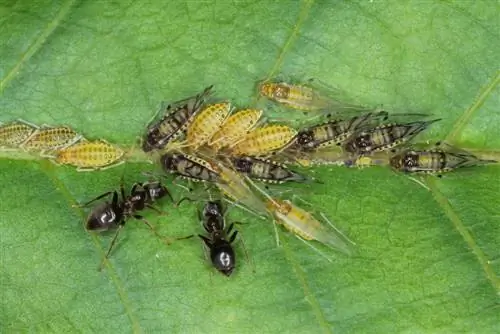
What pests are there on walnut trees and how can I combat them?
Walnut trees can be attacked by aphids and caterpillars. If an aphid infestation occurs, cutting off affected branches and rinsing or spraying them with soapy water and rapeseed oil helps. Caterpillar infestations can be combated by collecting, shaking off or cutting off branches early; alternatively, neem oil can be used.
Aphids
Symptoms of aphid infestation:
- Honeydew (sticky coating) on the leaves
- curled and partly stunted leaves
- yellow colored leaves
- dried and falling leaves
- Colonies (especially on new shoots)
Note: You must analyze the leaves up close to identify aphids. The little animals are only a few millimeters long and are brown, black or greenish in color.
Combat measures:
Variant 1 (for manageable infestation):
- Cut affected branches down to the he althy area.
- Then spray the tree with strong pressure. This is how you flush out the remaining lice.
Variant 2 (for severe infestation):
- Make a highly concentrated soapy water and add approximately 500 milliliters of rapeseed oil per ten liters. The oil sticks together the lice's respiratory organs.
- Spray the walnut tree until it is dripping wet.
- Repeat the process after about three days.
Caterpillars
The following caterpillars like to mess with the walnut tree and often leave massive damage behind:
- Blue Sieve Broths
- Willow borers
- Butterfly caterpillars
Optical characteristics of the caterpillars:
- yellowish-white color
- up to 6 cm tall
- Point warts on the body
The animals eat their way into the inside of branches and trunks and gradually form a hollow tunnel system there.
Combat measures:
- Be sure to react early, before the caterpillars have worked their way inside the tree. Once the insects get there, you can no longer reach them.
- If possible (few caterpillars and low tree), collect the caterpillars by hand.
- Alternatively, shake the caterpillars down. For this purpose you should place a film on the floor. Then shake the tree (for a small specimen) or work your way from branch to branch with a broom. Dispose of the caterpillars that have fallen on the film in the household waste.
- If there is a slight infestation in the early stages, you have the option of cutting off the affected branches. For tall trees, we recommend using telescopic pruning shears (€115.00 on Amazon).
- Neem oil (plant products) are also suitable for combating caterpillars. Spray your walnut tree or the affected parts of the plant with it. The oil settles in the caterpillars' respiratory tract, causing them to suffocate.
Note: The most important pest of the walnut tree is the walnut fruit fly, about which we have created a separate article.

